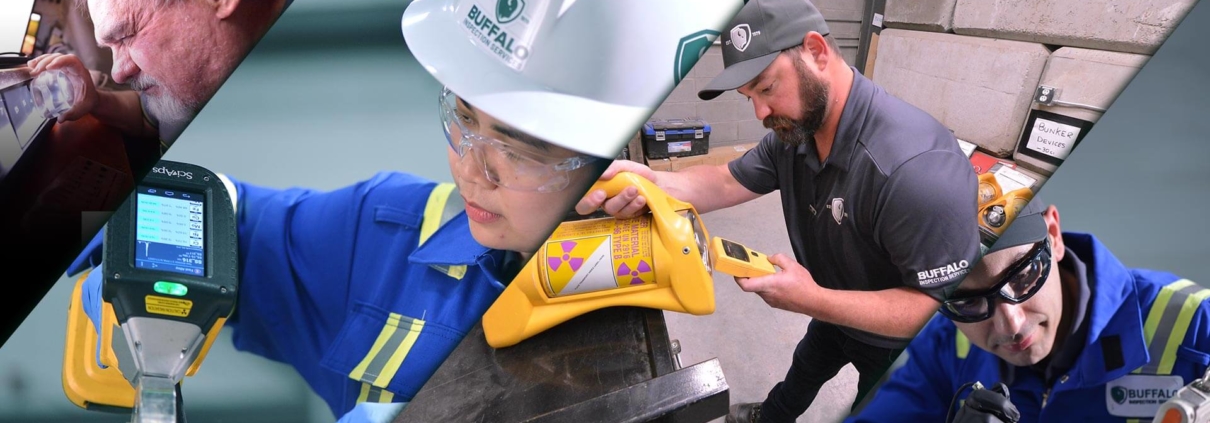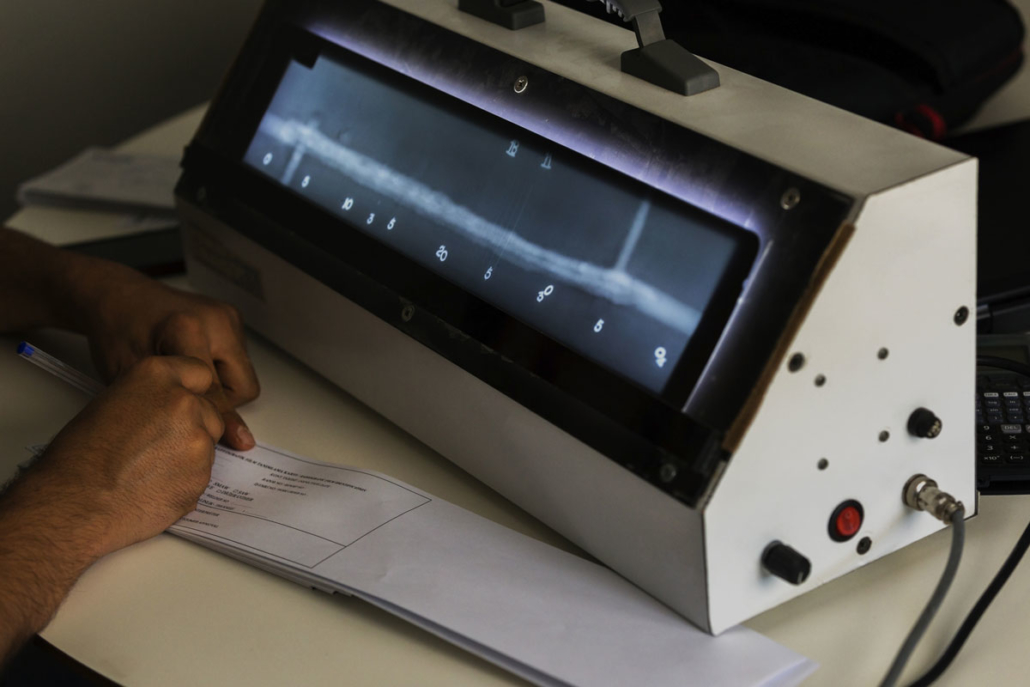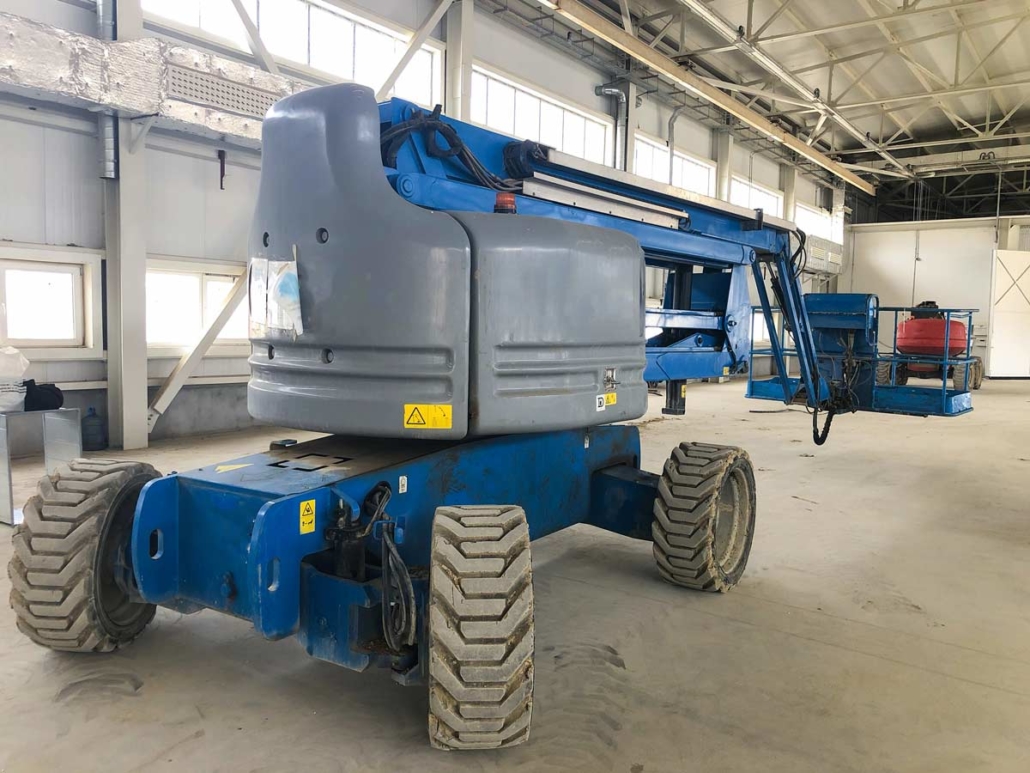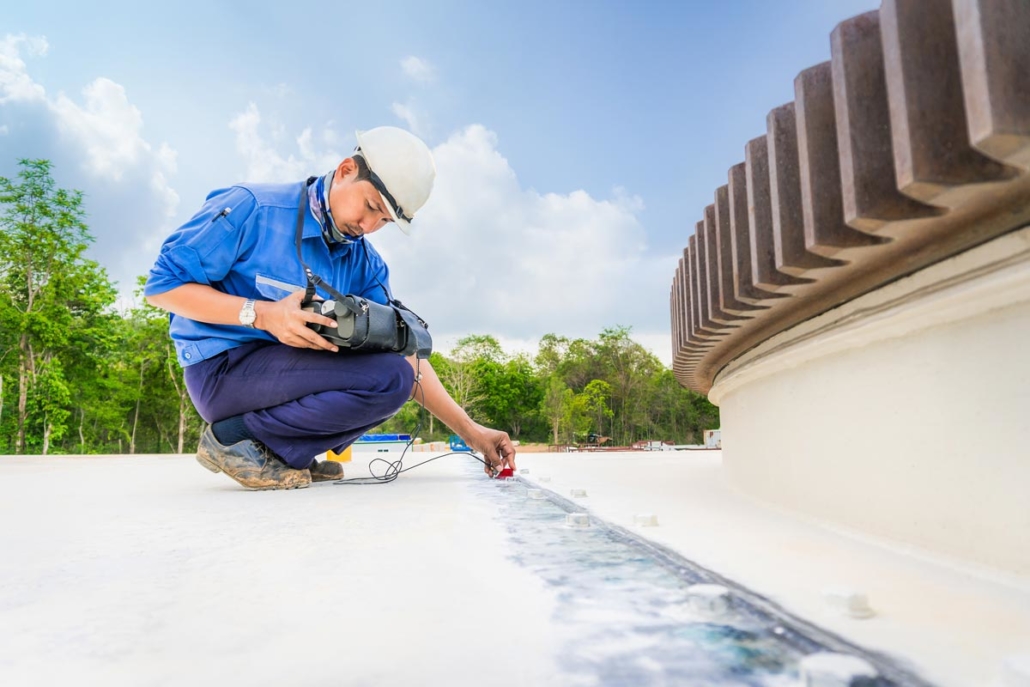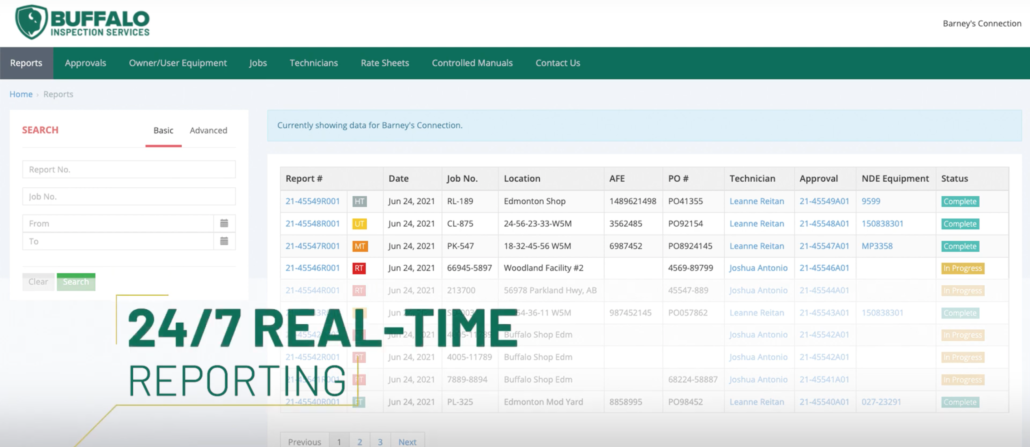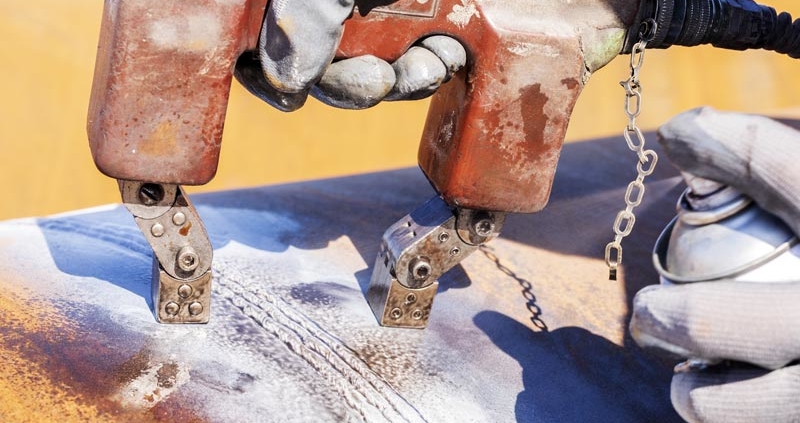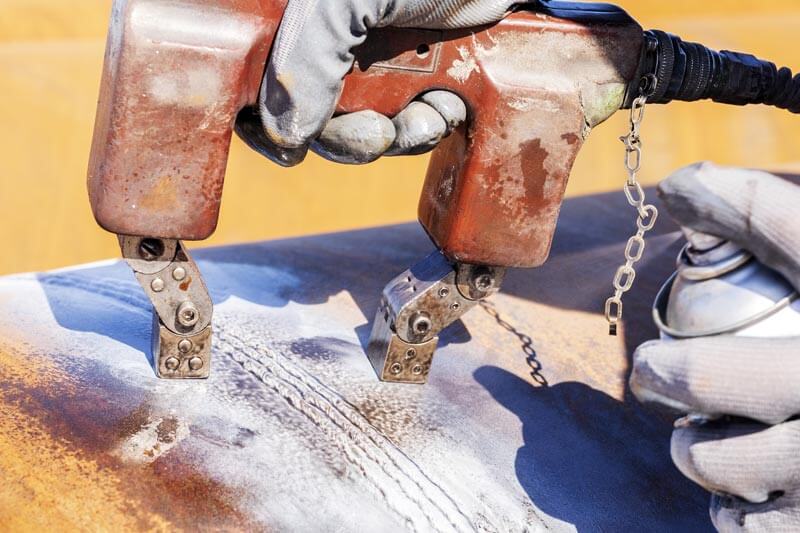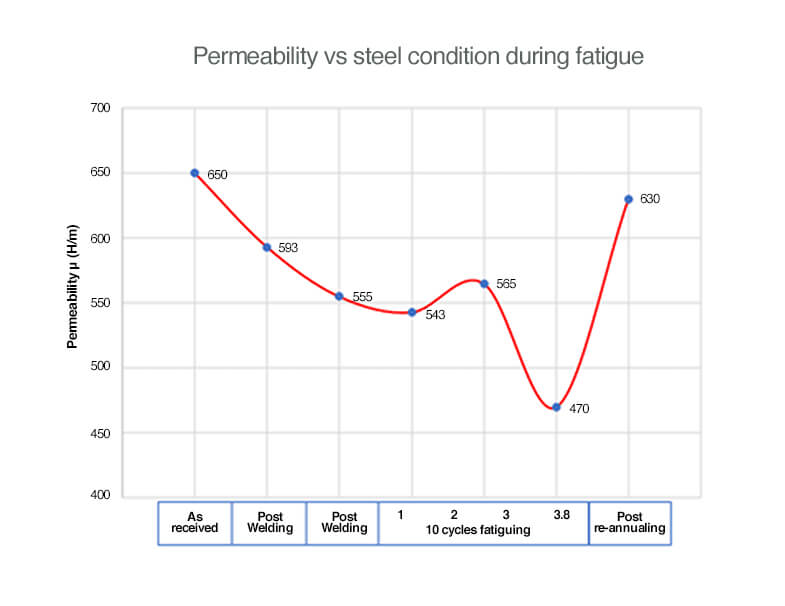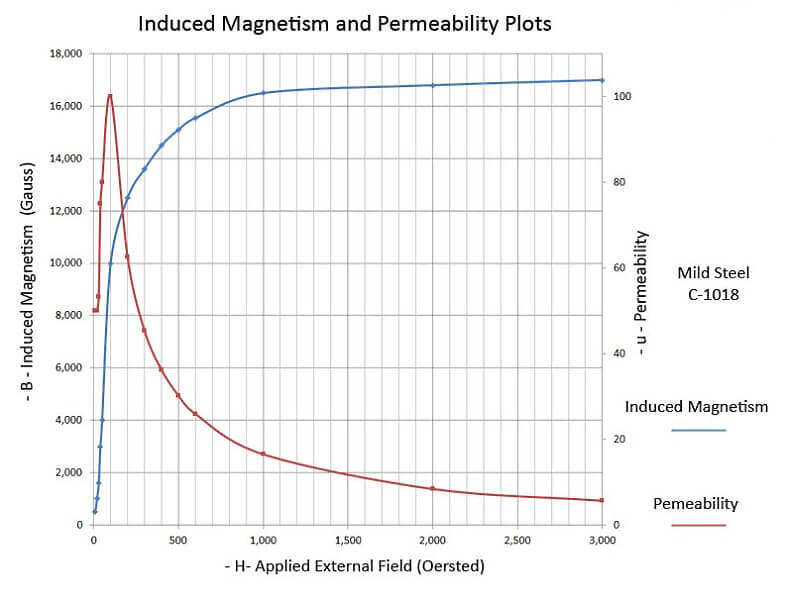5 NDT Services You Didn’t Know Buffalo Offered
NDT services are essential for ensuring the safety and efficiency of assets and materials. To assist organizations in maintaining equipment and components, Buffalo Inspection Services offers a range of NDT services across Western Canada. Our technicians use both traditional and advanced technology to provide the most reliable NDT services and inspections. As a leader in non-destructive testing, Buffalo is well-known for providing high-quality pipeline, oil and gas, and mining inspections. However, we also offer many other NDT services that you may not be aware of.
Here are five NDT services you didn’t know Buffalo offered.
Film Digitization
Lifting Equipment Inspection
Wire Rope Inspections
Ultrasonic and Advanced Surface Inspection
Real-Time Reporting Systems
NDT Services Offered by Buffalo
Film Digitization
Buffalo Inspection Services provides film digitization using advanced NDT technology and tools. Utilizing our large, purpose-built film-reading room and VIDAR’s NDT PRO Industrial Film Digitizer, Buffalo can digitize large quantities of radiography film. The result – cost-effective and high-quality digital images.
Digitized radiography film offers numerous benefits, including:
- Portability – digitized NDT film can be easily moved and shared via email, file transfer and even the cloud. As a result, the film can be viewed from anywhere, any time. If you are unable to access, store or move files due to IT restrictions, Buffalo will soon offer a SharePoint system as well. This system will manage all of your data storage, portability and movement requirements.
- Accessibility and advanced interpretation – since digitized film is so portable, it can be easily accessed and reviewed by auditors, Level 3 auditing inspectors and customers. As a result, the quality of interpretation is much greater with digitized film.
- Organization and archival benefits – digitized film can also be easily organized. Images can be archived alongside related documents such as RT reports, costing reports, location information and more.
- Preservation – unlike traditional film, digital film can be preserved indefinitely. While physical film deteriorates over time, digital film will experience no reduction in quality.
- Enhanced imaging – in addition to digitized images, Buffalo provides imaging software. This software will allow you to view, manipulate, enhance and zoom in on particular aspects.
As you can see, film digitization provides numerous advantages and a positive return on investment. Therefore, this NDT service is beneficial for any inspection program.
Lifting Equipment Inspection
Buffalo’s NDT services also include lifting equipment inspections. The highly trained and experienced NDT technicians at Buffalo are capable of performing inspections and testing on various types of lifting and hoisting equipment. This includes:
- Forklifts
- Mobile truck cranes
- Overhead industrial cranes
- Man lifts and baskets, etc.
Hoisting and lifting equipment is consistently exposed to stress and fatigue. Therefore, NDT inspection is essential for safe and uninterrupted operation. Buffalo uses both advanced and traditional NDT methods to ensure accurate inspections and reliable results for the safe and efficient use of lifting equipment.
Buffalo’s lifting equipment inspection techniques include:
- Visual Inspection (VT)
- Magnetic Particle Inspection (MPI or MT)
- Mobile Magnetic Particle Inspection
- Liquid Penetration Testing (PT)
Need special service? Buffalo provides 24/7 lifting equipment inspections. For 24/7 dispatch, call 780.975.6475.
Wire Rope Inspections
As a result of their limited service life, wire ropes require regular inspection. In many cases, this ensures the health and safety of both employees and the public. To help maintain the safety of wire ropes, Buffalo’s NDT services include wire rope inspections.
To provide reliable testing, Buffalo’s NDT technicians use advanced Magnetic Flux Leakage Detection Technology. This technology not only allows for a reliable estimate of the condition of wire ropes but also an estimate of their remaining lifespan.
Buffalo technicians can provide inspections of wire ropes ranging in size from 10mm to 60mm in diameter.
At Buffalo, we inspect the following types of wire ropes:
- Passenger ropeways (e.g. chairlifts, gondolas, etc.)
- Elevator rope
- Lifting device ropes
- Bridge strand
- Cable belt
- Ziplines
- Container crane ropes
- Mine hoist ropes
- Wire ropes for cable ferries
Ultrasonic and Advanced Surface Inspection
Buffalo Inspection Services is dedicated to providing the most reliable and cost-effective NDT services. Therefore, we use the most advanced NDT technology and tools to help increase productivity and offer high-quality inspections.
Buffalo provides portable and complete ultrasonic and advanced surface inspections by employing state-of-the-art technologies (e.g. Total Focus Method) and cutting-edge tools (e.g. M2M GEKKO).
Buffalo’s ultrasonic and advanced surface inspection techniques and capabilities include:
- Hardness Testing
- Phased Array Ultrasonic Testing (PAUT)
- Time of Flight Diffraction (TOFD)
- Laser Alloy Testing (LIBS)
- Magnetic Particle Inspection (MPI or MT)
- Liquid Penetration Inspection (LPI)
- Visual Inspection
- Positive Material Identification (PMI), Spark Testing/CE
- Ferrite Testing
Real-Time Reporting Systems for NDT Services
In addition to the NDT services discussed above, Buffalo provides its partners with access to advanced real-time reporting systems.
To serve our clients better, Buffalo offers two custom NDT software programs – BUFFALO CONNECT and BUFFALO CONNEX. These reporting tools are unlike anything offered by other NDT companies in Western Canada. These systems offer numerous benefits and unmatched value and are, therefore, highly sought after.
Buffalo Connect
BUFFALO CONNECT is Buffalo’s client Extranet Portal. This portal allows our clients to:
- Access work orders and reports in real-time, from anywhere, day or night
- Easily and instantly share information and collaborate on projects
- View and monitor project costs
- Access asset records, such as tank and vessel reports
- Access procedural manuals, as well as technician certifications and tickets
- Search for reports that contain specific information (e.g. Report Number, Job Number, etc.)
Above all, BUFFALO CONNECT provides a level of transparency that is not commonly seen in the non-destructive testing industry. This transparency allows us to create open, honest and mutually-beneficial partnerships.
Check out a demo here – BUFFALO CONNECT Demo
Buffalo Connex
CONNEX is Buffalo’s proprietary work order management system. This real-time reporting system allows our experienced technicians to efficiently track and complete inspection reports. It also helps Buffalo comply with all contract requirements via real-time purchase order spend and invoice tracking.
Above all, CONNEX ensures real-time code compliance and provides technicians with the ability to integrate specific reporting requirements. As a result, Buffalo’s reporting meets the highest standards and is extremely consistent.
Learn more about CONNEX – BUFFALO CONNEX Demo
Become a Buffalo Partner and Benefit from Accurate and Reliable NDT Services
The NDT services above are just the tip of the iceberg – Buffalo offers an extensive range of NDT/NDE inspection services to ensure the safety, reliability and longevity of a wide range of materials and assets.
With more than 40 years of experience, 60 inspection crews and 28 locations throughout Western Canada (including satellite locations), Buffalo is able to provide fast, convenient and accurate inspections.
Above all, our expert NDT technicians foster a culture of safety, transparency and innovation. As a result, you will benefit from cost-effective, honest and high-quality service.
To learn more about Buffalo’s NDT services, or how to become a partner, contact us today at 1-780-486-7344.

